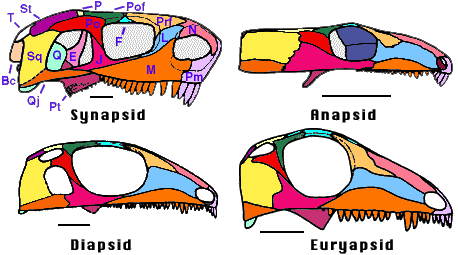Teeth size and shape are heavily correlated with one another and thus impact each other a lot as well. As the species of hominids diverged from previous ancestors, dentition has been seen to increase in complexity, which means more individual teeth and not only one or two molars.
Mammals have distantly evolved from reptiles, and one of the key components in separating us two species was the development of temporal fenestrae enabling more jaw muscles to form and stronger bites. These holes in the skulls have been modified as the years and humans evolve.
 |
| http://tolweb.org/notes/?note_id=463 |
Yet, even more diversity among mammals was able to occur. This was caused by changes in "cusp number, morphology, topology and orientation are species-specific. Those disparities are due to differential, spatiotemporal cell multiplication and programmed cell death of the inner enamel epithelium cells during embryonic and post-embryonic development"
 |
| http://www.studiodentaire.com/en/glossary/cusp.php |
Specifically to teeth size, there is a direct relationship between the size of the individual and maxillary central incisor (you're two big front teeth). This correlation is key to understanding that as the human species grew and became more complex, as did their dentition.
That is all for today folks, but check back for updates on the evolution of the four different division of our teeth: incisiors, pre-molars, molars, and canines!
Ta-ta for now
 |
| http://www.you-can-be-funny.com/FunnyDentalCartoons.html |
No comments:
Post a Comment